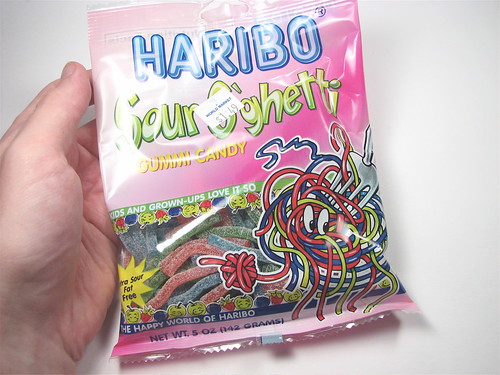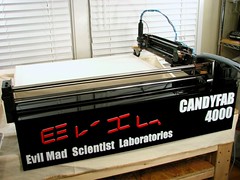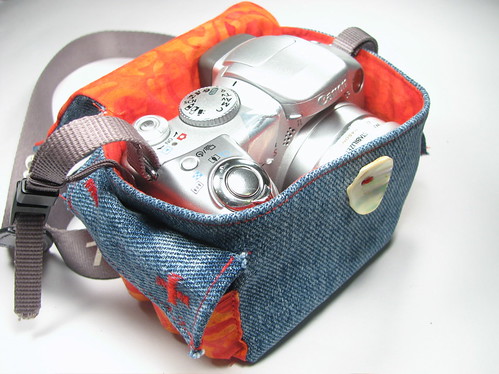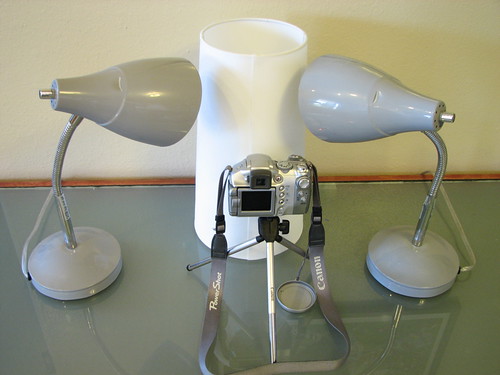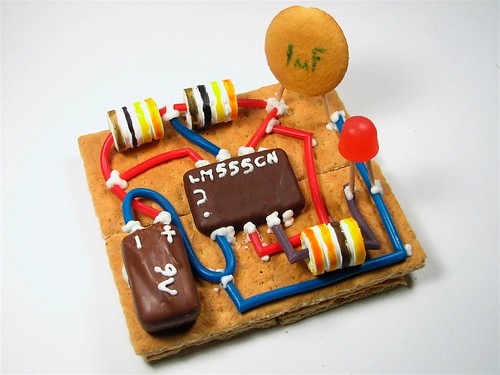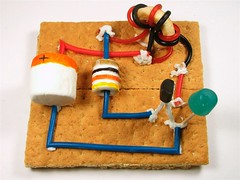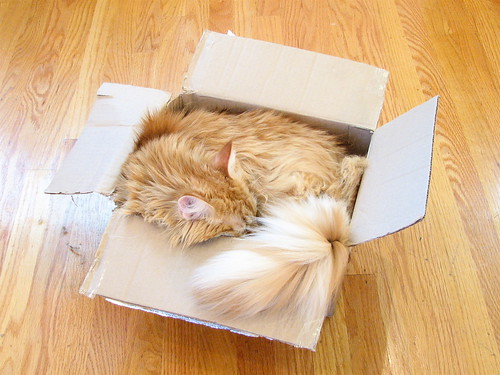It would seem that the Flying Spaghetti Monster has seen fit to bless this bag of Haribo “Sour S’ghetti” with his noodly presence. (Ramen.)
We came across this while working on the Circuitry Snacks project– they were one of the candidates that we originally thought might be good to serve as edible “wires.” Go figure.
[Related: FSM Costume, FSM Toast]




